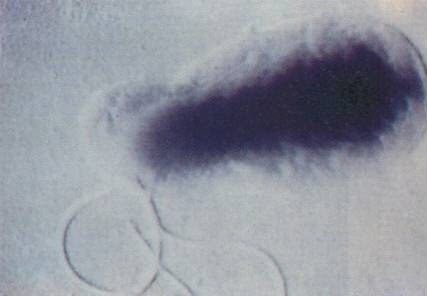Canine Bartonellosis
| Bartonellosis is an emerging infectious bacterial disease in dogs. It is caused by the gram-negative bacteria Bartonella, which may also affect cats and humans. In humans, infection of the Bartonella bacterium is also known as cat scratch disease or more commonly as cat scratch fever, though it may not have been transmitted through a cat’s scratch or bite. The Bartonella spp. bacterium is transmitted to dogs via fleas, sand flies, lice, and ticks. Herding and hunting dogs are at a higher risk due to increased exposure to disease vectors like fleas, sands flies, lice, and ticks. Bartonella is a zoonotic disease, meaning that it can be transmitted between animals and humans. The disease is not fatal for humans, but it still poses great risks to immune-compromised patients, such as those undergoing chemotherapy treatments or those with the AIDS virus. |
Symptoms
The majority of human patients are less than 21 years old. The following are symptoms commonly seen in humans:
Symptoms in dogs:
- Red papule (small sized solid bump) at bite or scratched site
- Painful lymph nodes of involved area
- Shivering and chills
- Malaise
- Lack of appetite
- Pain in muscles
- Nausea
- Altered brain functions
- Pink eye
- Hepatitis
Symptoms in dogs:
- Fever
- Enlargement of spleen and liver
- Lameness
- Swelling and inflammation of lymph nodes
- Inflammation of heart muscles
- Inflammation and irritation of the nose
- Inflammation of the eyes
- Vomiting
- Diarrhea
- Cough
- Seizures
- Arthritis
- Nasal discharge and/or nose bleed
- Inflammation of the brain
- Many other symptoms similar to those in humans
Causes
- Bacterium Bartonella infection
- History of flea or tick infestation
- Transmission in dogs is through sand flies, lice, ticks and flea exposure
- Dogs living in rural environments are at an increased risk
- Transmission of the disease from dogs to humans in suspected to be through dog bites
Diagnosis
If your veterinarian suspected your dog is infected with Bartonella spp., he/she will conduct a complete examination, including blood tests, a biochemistry profile and urinalyses.
Abnormalities such as a decreased number of platelets or anemia may be present. An increased number of white blood cells or leukocytosis may also be evident in blood testing. Biochemistry profiling may reveal abnormal liver enzymes and a decreased concentration of albumin or protein in the blood in affected dogs. Confirmation of Bartonella spp. will also involve a positive result from culturing the organisms from a sample of blood. A polymerase chain reaction (PCR) test is a more advanced method for detecting bacterial DNA using a sample of tissue taken from a papule.
Abnormalities such as a decreased number of platelets or anemia may be present. An increased number of white blood cells or leukocytosis may also be evident in blood testing. Biochemistry profiling may reveal abnormal liver enzymes and a decreased concentration of albumin or protein in the blood in affected dogs. Confirmation of Bartonella spp. will also involve a positive result from culturing the organisms from a sample of blood. A polymerase chain reaction (PCR) test is a more advanced method for detecting bacterial DNA using a sample of tissue taken from a papule.
Treatment
No established antibiotic protocol exists for the treatment of Bartonellosis in dogs. Depending on symptoms, a selection of antibiotics will be made by your veterinarian on an individual basis.
Management
The overall prognosis in dogs is highly unpredictable and dependent on the clinical presentation of the disease. After the initial treatment, you should monitor your dog for any recurrence of clinical signs and notify your veterinarian if you notice any symptoms. Note that this disease has not yet been fully understood in dogs and a full resolution of the disease after treatment may be achieved.
Prevention
The best way to prevent your dog from contracting Bartonellosis is to protect them from the exposure to fleas, sand flies, lice and ticks.

 RSS Feed
RSS Feed